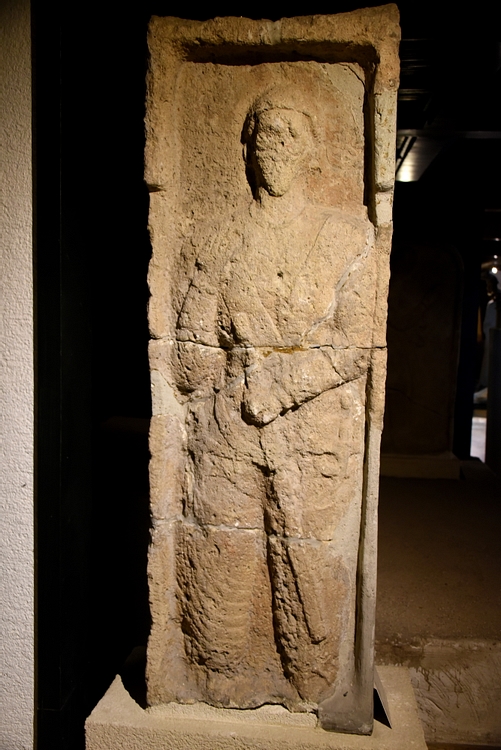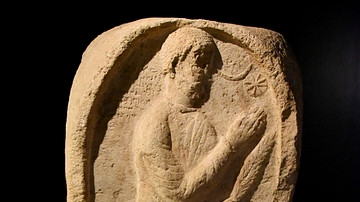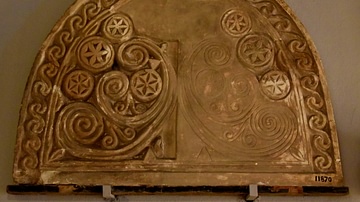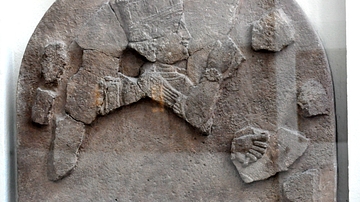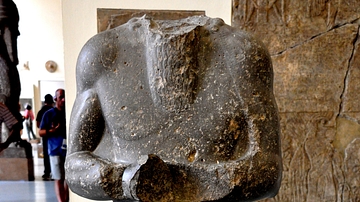Illustration
The man depicted on the stele was represented frontally. He raises his right arm while his left hand holds what appears to be a staff. A sword hangs down at his left waist. The divine emblems of Ishtar and Sin were placed above his left shoulder. Parthian, 1st century BCE to 1st century CE. From Ashur (Assur), Northern Mesopotamia, in modern-day Iraq. (Museum of Archaeology, Istanbul, Turkey).
About the Author
Cite This Work
APA Style
Amin, O. S. M. (2018, May 06). Parthian Sandstone Stele from Ashur. World History Encyclopedia. Retrieved from https://www.worldhistory.org/image/8723/parthian-sandstone-stele-from-ashur/
Chicago Style
Amin, Osama Shukir Muhammed. "Parthian Sandstone Stele from Ashur." World History Encyclopedia. Last modified May 06, 2018. https://www.worldhistory.org/image/8723/parthian-sandstone-stele-from-ashur/.
MLA Style
Amin, Osama Shukir Muhammed. "Parthian Sandstone Stele from Ashur." World History Encyclopedia. World History Encyclopedia, 06 May 2018. Web. 23 Oct 2024.

